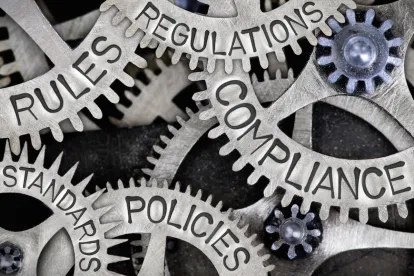In recent years, there has been increasing attention to the standard applied by regulators when determining when two unrelated business entities share sufficient control over a group of employees such that they may be considered “joint employers.” On November 20, 2019, the federal government released its Unified Agenda of Federal Regulatory and Deregulatory Actions – Fall 2019 (“Agenda”), which reports on the actions administrative agencies plan to issue in the near and long term. According to the Agenda, three agencies – the Equal Employment Opportunity Commission (“EEOC”), the National Labor Relations Board (“NLRB”), and the Department of Labor (“DOL”) – each plan to issue regulations governing joint employment in the near future. The NLRB and DOL have been working on clarifying this issue within their own spheres for some time, while the EEOC is addressing the issue now for the first time.
Equal Employment Opportunity Commission
According to EEOC’s Agency Rule List, the agency plans to clarify its interpretation of when an entity is a covered joint employer under the federal equal employment opportunity laws based on the definitions of the statutory terms “employee” and/or “employer.” The EEOC has characterized this rule as a “proposed amendment” to many of the laws the agency enforces, such as the Age Discrimination in Employment Act, the Americans with Disabilities Act, and Title VII of the Civil Rights Act. The agency predicts it will issue a notice of proposed rulemaking on this topic in December 2019 and the comment period will extend at least until February 2020, although the deadline could be extended even further once the process is underway.
This announcement came as a surprise considering the EEOC has never before addressed the joint employer standard and did not hint at its plans before the November 20 announcement. Although this is the first time the EEOC will address joint employment and its stance remains somewhat vague, it will not be the first agency to pursue rulemaking on the subject. Both the NLRB and the DOL have been working to clarify this issue for the last year, and both agencies are almost ready to release their final rules.
National Labor Relations Board
As we first reported to you last year, the NLRB has been working to finalize its proposed rule clarifying the joint employer test under the National Labor Relations Act since September 2018. The proposed NLRB regulation is designed to limit joint employer liability, and under the rule, an employer would be considered a “joint employer” of a separate employer’s employees only if that employer possesses and actually exercises “substantial direct and immediate control” over the employees’ essential terms and conditions of employment in a manner that is not “limited and routine.” According to the NLRB’s Agency Rule List, the agency’s final joint employer rule will be published in the Federal Register in December 2019.
Department of Labor
Finally, the DOL also will clarify its joint employer standard by the end of 2019. In April 2019, the DOL published its notice of proposed rulemaking, which pitches a four-part balancing test to determine whether two or more companies are joint employers. The test assesses whether the potential joint employer: (1) Hires or fires the employee; (2) Supervises and controls the employee’s work schedule or conditions of employment; (3) Determines the employee’s rate and method of payment; and (4) Maintains the employee’s employment records. The comment period for this rule closed in June. The DOL announced in its Agency Rule List that it too plans to release its much-anticipated final rule in December 2019. However, the DOL has yet to release a draft of the final rule to the Office of Management and Budget for review, which suggests the agency is still working on finalizing the details.
The agencies’ projected publication dates for these proposed and final rules may be aspirational and pushed into the new year. Although the specific implications of these rules are still unknown and will vary depending on the facts of each case, the proposed rules tend to limit the reach of joint employer status, which will almost certainly lead to fewer findings of joint employment by these agencies. As always, we will keep you informed as updates are released, so stay tuned.




 />i
/>i

